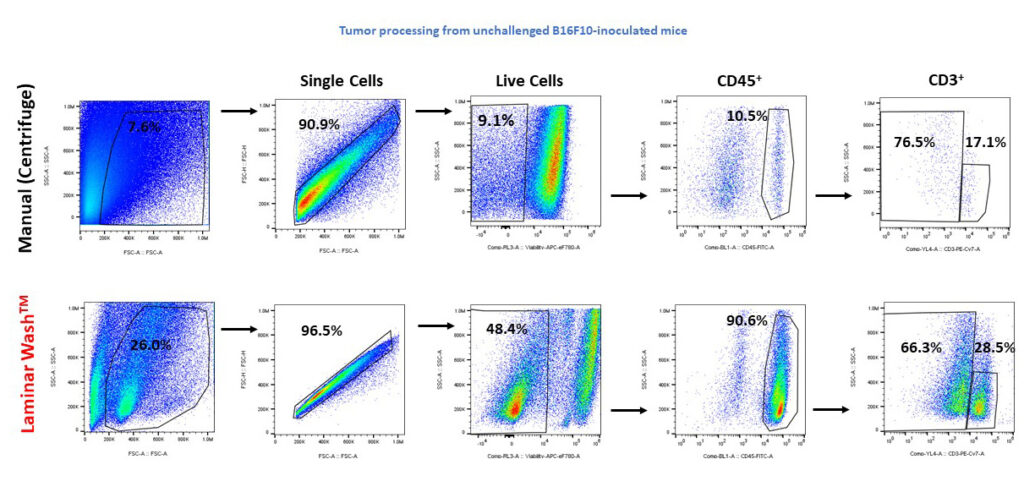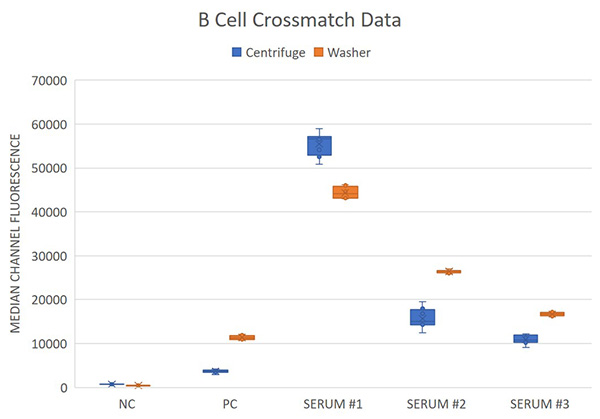CURIOX PRODUCTS
LAMINAR WASH™ Auto 1000 System
Accelerate high-throughput flow and mass cytometry workflows with fully automated sample preparation.
The Laminar Wash AUTO 1000 System eliminates time-consuming and labor-intensive manual pipetting and handling by automating the complete surface and intracellular staining workflow for flow and mass cytometry. You get all the benefits of laminar washing in a completely automated system.


Laminar Washing Technology
Gentle cell washing in a 96-well format.
Optimized Deck Layout
A completely contained system for washer maintenance plates, washer load tray,
heater/shaker, cooling device, reagent/buffer plates, input/output stacks and tips.
Laminar Wash AUTO Software
The user-friendly software interface allows sample-specific modifications
to methods and comes with pre-programmed protocols to ensure user consistency.
- Home
- Laminar Wash™ Auto 1000 System
What the AUTO 1000 delivers:
- The same data quality, cell retention, cell viability, and reproducibility benefits of the HT2000 and Mini systems
- An intuitive user interface that is easily programmed for those new to automation as well as automation experts
- A pre-programmed, ready-to-use solution covering the entire sample prep workflow
- Electronic files that can track and trace samples
- The reduction in operator-to-operator variability that automation provides
Technology overview
Achieve truly high throughput suspension cell sample preparation
“The Laminar Wash’s performance allows us to get very tight control over populations with very tight CV’s largely due to the fact of the clear separations between populations. The maintained ability to detect rare populations is important as we detect the next round of cell therapy products.”
Arnaud Colantonio, PhD.
Associate Director of Analytical Development at AdiCet Bio,
now with Kite Pharma
HOW OUR LAMINAR FLOW TECHNOLOGY WORKS
Compared to a traditional, centrifuge-driven cell washing workflow, laminar cell washing is simpler and faster. With the AUTO 1000, you can prepare 16 samples in just 6 minutes.

Scientific Data
Automated laminar washing technology delivers good consistency and increased retention of low input T cell numbers from freshly thawed PBMC
Simple and straightforward reproducibility with Laminar Wash Automation
Complement-dependent cytotoxic crossmatch (CDCXM) and flow cytometric crossmatch (FXCM) are both common methods to predict donor-recipient compatibility – the potential success of an organ transplant. FCXM assays are more widely applied across human leukocyte antigen (HLA) labs. FXCM utilizes the use of multiple washing steps, serum treatment and secondary antibody used. Results between the centrifugation-based and Laminar Washing methods within 8 replicates and 3 test sera and 2 controls show average CVs of 12.4% vs 7.9% respectively. With Laminar Wash technology, greater consistency was seen on the Median Channel Fluorescence values gated on B-cells. The ratio of positive crossmatch yielded a higher shift while maintaining a lower MCF value for the negative background. This is attributed by a superior wash and accuracy in matrix serum handling with primary patient cells.


